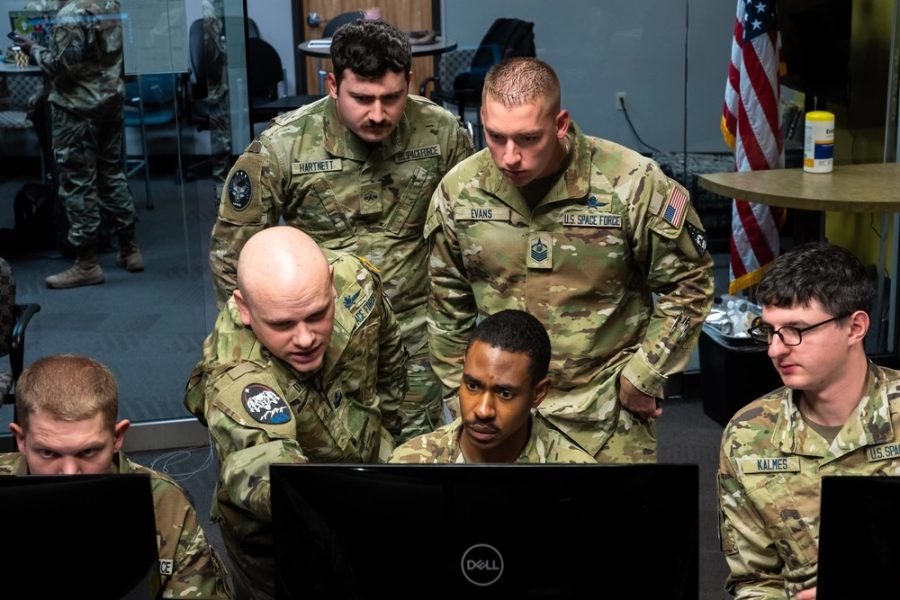The Space Force wants to starting bringing in space professionals from Air Force Reserve Command this summer, starting with Reservists in full-time status who volunteer for full-time duty.
“I am hopeful that we will open the first transfer window this summer for full-time Guardians since the process to do so largely exists already as part of interservice transfers,” Chief of Space Operations Gen. B Chance Saltzman said in a March 27 memo to Guardians that was posted on the popular unofficial Facebook page Air Force amn/nco/snco. Air & Space Forces Magazine confirmed the memo’s authenticity.
The Air Force Reserve’s main space-focused unit is the 310th Space Wing, with roughly 1,100 military and civilian personnel. The Reserve also has other space units like the 26th Space Aggressor Squadron and the 9th Combat Operations Squadron.
Saltzman’s memo comes about four months after Congress passed the Space Force Personnel Management Act, which does away with “regular” and “reserve” members in favor of a combined full-time and part-time system. The Space Force hopes the new system will help manage its force more effectively, improve quality of life and retention, and tap into skill sets that many reserve service members develop in their civilian jobs.
Under the new construct, Guardians will be either on sustained duty orders (a full-time position with subsequent full-time positions throughout their career) or not on sustained duty (serving in a part-time position). According to the law, Guardians not on sustained duty would participate in at least 48 scheduled drills or training periods per year and serve on active duty for at least 14 days a year, or, alternatively, serve on active duty for training for no more than 30 days a year.
There will also be an inactive duty status, similar to the Individual Ready Reserve in other branches. However, it could be a while before the Space Force works out when the new structures take effect.
“This is a fundamental change to how we do business,” Saltzman wrote in his memo. “For example, I don’t anticipate part-time Guardians maintaining mission-ready status in 24/7 employed-in-place operations. Instead, we will leverage their expertise in institutional and service-retained functions like education, training, and test units or key staff positions.”
For Reservists in full-time status who volunteer for full-time duty, the Space Force “will work to place you based on your prioritized desires,” Saltzman said in his memo. However, Reservists who are not in full-time status may have to wait a while longer as the branch works out the nitty-gritty of standing up a part-time capability.
“Let me acknowledge the sheer amount of work we have ahead of us,” the CSO said. “We have yet to put in place the administrative processes to manage a part-time force—promotions, retirements, and more are still to be decided. I have pressed our team to move quickly, but this is going to take time.”
Saltzman intends to resolve those details as soon as possible. In the meantime, more communication and Ask-Me-Anything sessions led by the S1 personnel staff are on the way. No matter what, he said Reservists will not be asked to make a choice “until we have provided them with all the information they need to do so.”
Meanwhile, policy makers continue to deliberate on standing up a Space National Guard. The 2024 National Defense Authorization Act called for a study looking into the feasibility of leaving National Guard space-focused units in place, transferring those units to the Space Force, or transferring them to a new Space National Guard. That study was due March 1, but Saltzman said Air Force Secretary Frank Kendall will submit a report to Congress “later this spring.”
“Regardless of which way this goes, my primary concern is making sure we hang on to those units, those resources, and especially the expertise that currently lives in the Guard,” Saltzman said at the Mitchell Institute’s Spacepower Security Forum on March 27.
“The question becomes ‘well what’s the optimal way to do it?’ And then really it gets into more administrative issues,” such as whether the Space Force can afford the structure and overhead of managing two components and still have retention and upward mobility, “the things that make a force viable for its personnel.”
“We’ll see how Congress decides to organize this,” Saltzman said.
